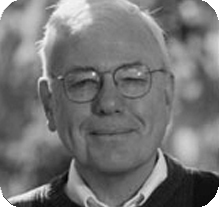
A.M. TURING AWARD WINNERS BY...
Charles P. (Chuck) Thacker

United States – 2009
Short Annotated Bibliography
- Thacker, Charles P., Lawrence C. Stewart Edwin H. Satterthwaite, Jr., “Firefly: A Multiprocessor Workstation,” IEEE Transactions on Computers, Vol. 37, Num. 8, August 1988, pp. 909 – 920. The authors describe the goals, hardware, software system, and performance of the Firefly, and discuss the extent to which the development has been successful in providing software to take advantage of multiprocessing.
- Thacker, Charles P., “Personal distributed computing: the Alto and Ethernet hardware,” A history of personal workstations, January 1988, ACM, New York. Thacker describes his personal history with the Alto and Ethernet.
- Thacker, Charles P., David G. Conroy, Lawrence C. Stewart, “The Alpha demonstration unit: a high-performance multiprocessor,” Communications of the ACM, Vol. 36, Num. 2, Feb. 1993, pp. 55-67. Available here.This describes the DEC Alpha project in detail.
- Thacker, Charles P., “Improving the future by examining the past: ACM Turing Award Lecture,” Proceedings of the 37th annual international symposium on Computer architecture, pp. 348-348, ACM, New York, 2010. Available in MP4
 and as PDF
and as PDF  . In this lecture Thacker describes how, during the last fifty years, the technology underlying computer systems has improved dramatically. As technology has evolved, designers have made a series of choices in the way it was applied in computers. In some cases, decisions that were made in the twentieth century make less sense in the twenty-first. Conversely, paths not taken might now be more attractive given the state of technology today, particularly in light of the limits the field is facing, such as the increasing gap between processor speed and storage access times and the difficulty of cooling today's computers. He describes these choices and suggests possible changes to make computing better in the twenty-first century.
. In this lecture Thacker describes how, during the last fifty years, the technology underlying computer systems has improved dramatically. As technology has evolved, designers have made a series of choices in the way it was applied in computers. In some cases, decisions that were made in the twentieth century make less sense in the twenty-first. Conversely, paths not taken might now be more attractive given the state of technology today, particularly in light of the limits the field is facing, such as the increasing gap between processor speed and storage access times and the difficulty of cooling today's computers. He describes these choices and suggests possible changes to make computing better in the twenty-first century.




























 THE A.M. TURING AWARD
THE A.M. TURING AWARD